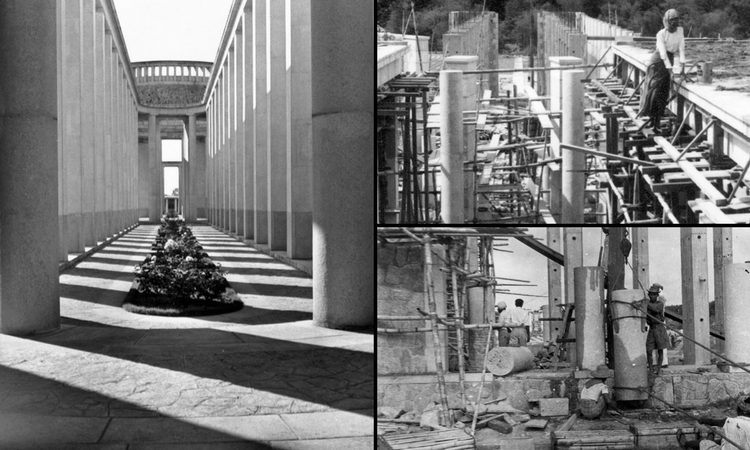08 February 2018
Rangoon Memorial – the history, design and unveiling
Tomorrow marks the 60th anniversary of the unveiling of the CWGC Rangoon Memorial in Myanmar by General Sir Francis Festing, Commander in Chief of Far East Land Forces, on 9 February 1958.

CWGC Rangoon Memorial in Taukkyan War Cemetery
The history
Some of the most difficult conditions experienced by British and Commonwealth forces in the Second World War were in Burma (now Myanmar), where a bitter campaign against the Japanese Army raged across the country, from Thailand to the borders of India.
Most of the Commonwealth troops fighting in Burma served with the Indian Army. Their courage, skill and determination led, in no small part, to the eventual allied victory against the Japanese. The CWGC commemorates almost 39,500 service personnel in Burma, of whom nearly 23,000 served with Indian forces.
The design

Rangoon Memorial in 1960 (left), and construction of the memorial in 1957 (right)
The memorial is located in the centre of Taukkyan War Cemetery, which is the largest of the three war cemeteries in Burma. In 1951 remains were brought to the cemetery from many locations across the country from civil and cantonment cemeteries, to isolated jungle and roadside sites. The cemetery contains more than 6,300 Commonwealth burials of the Second World War, 867 of them unidentified, and more than 50 Commonwealth servicemen of the First World War.
However, the vast majority of those who died in Burma have no known grave, and they are commemorated by the CWGC Rangoon Memorial, which bears the names of more than 26,850 service personnel, of whom more than 19,600 served with Indian forces.
The Rangoon Memorial was designed by H. J. Brown, who worked on several cemeteries and memorials for the Commission in India, Pakistan and Burma.
Brown noted that ‘although the layout of the graves has evidently been arranged to accommodate a memorial at or near the entrance, it seemed to me that this was not the most suitable site’. He proposed a central memorial, partly to suit the layout of the cemetery, but also because it allowed visitors to first understand the purpose of the cemetery before experiencing the memorial.
The memorial consists of two long open garden courts, flanked by long colonnades on either side, and joined in the middle by an open rotunda. Brown chose a circular shape for the centrepiece to allow English, Urdu, Hindu, Gurmukhi and Burmese translations of the inscription to be placed in positions of equal importance.
The unveiling

Unveiling of the memorial on 9 February 1958, The Honourable U Nu, British Ambassador Mr Allen, and General Festing (right)
The memorial was unveiled on 9 February 1958 by General Sir Francis Festing, Commander in Chief of Far East Land Forces. In his address, General Festing said that it presents a picture of a simple truth – that of a multitude of men of many races and widely differing faiths, who gave their lives in a common cause.
Among those present were more than 50 relatives of those commemorated on the memorial, who travelled from the United Kingdom.
Recently discovered colour footage of the unveiling

